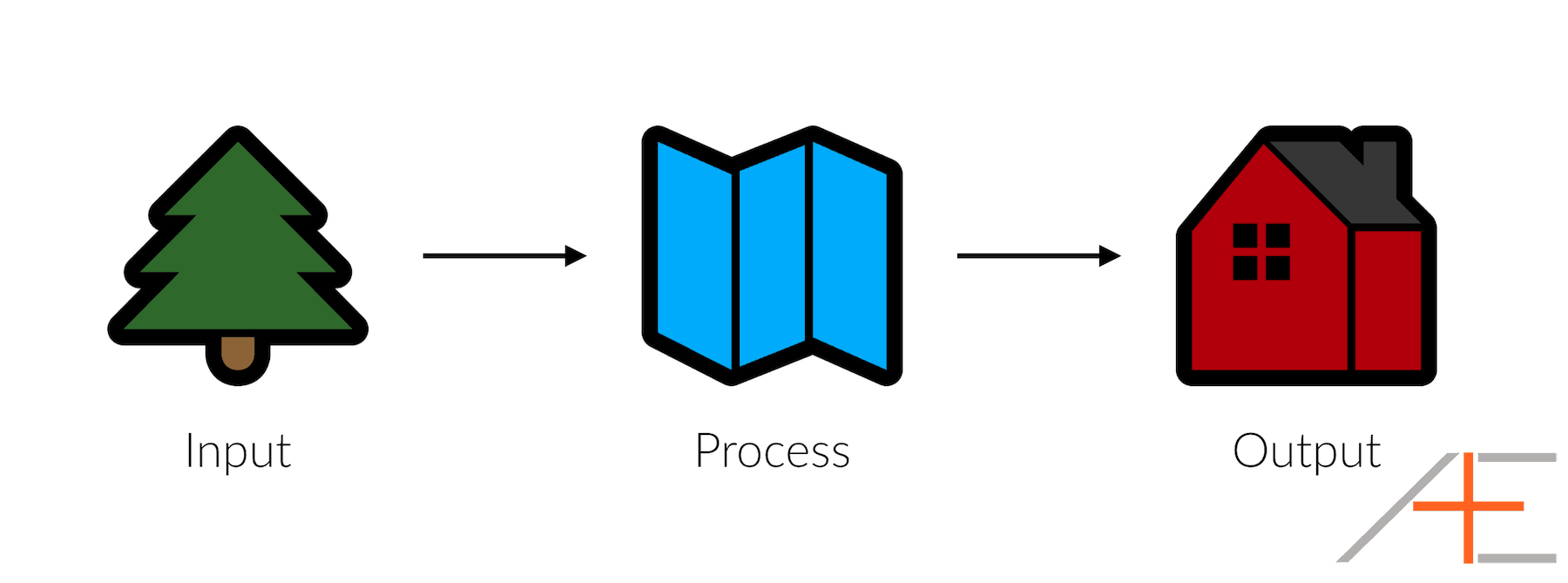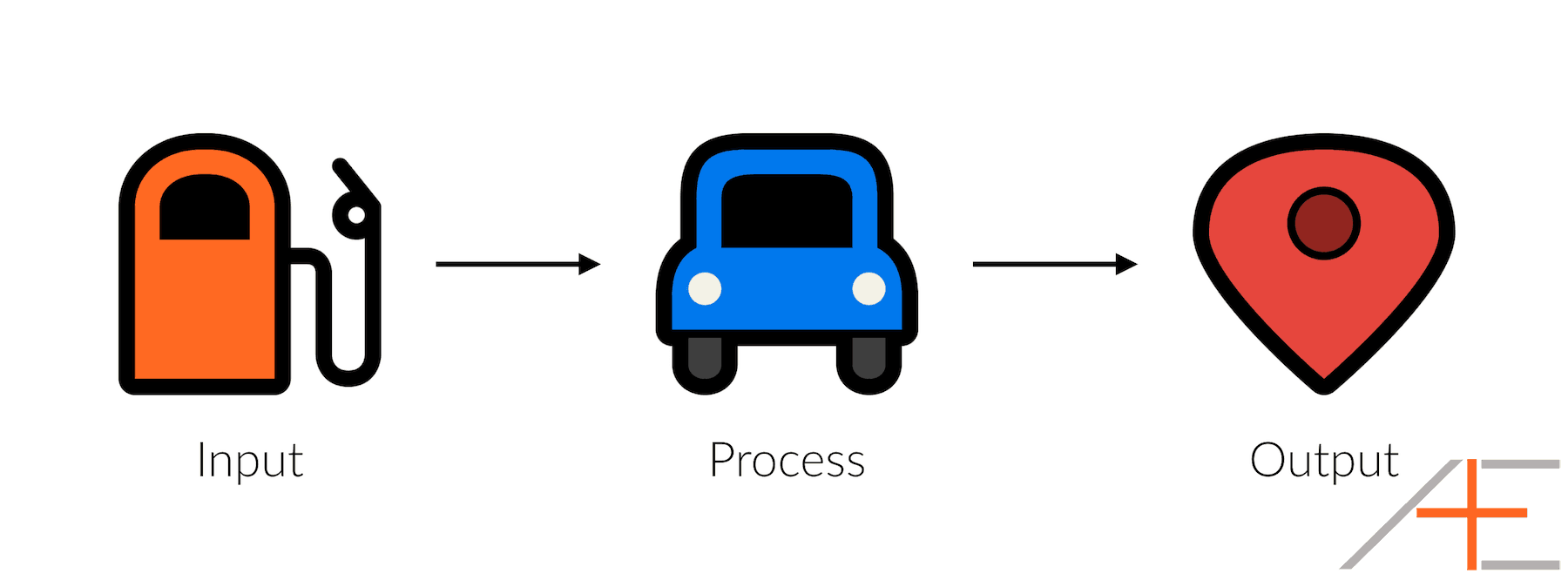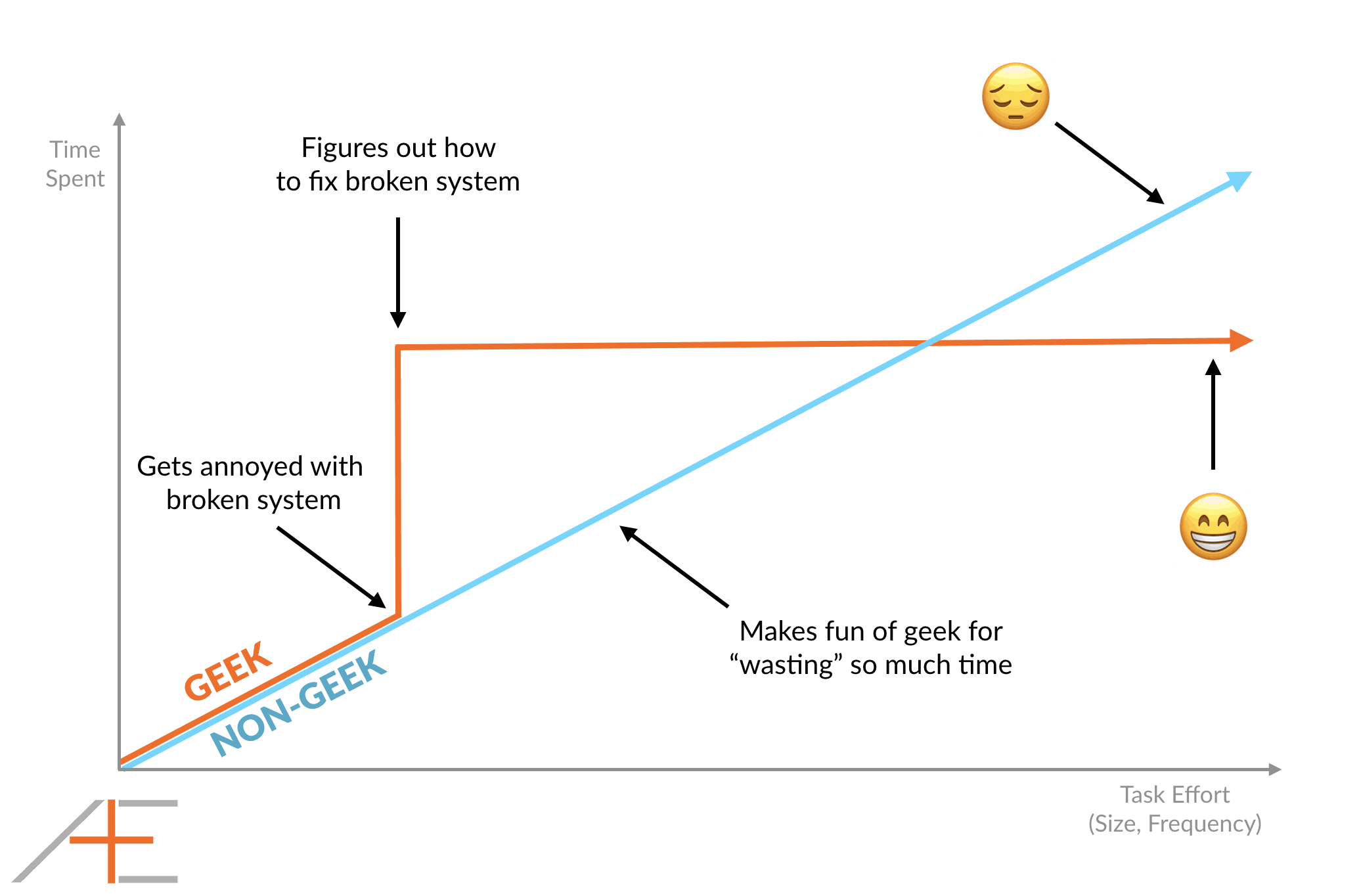
Your life, like everything in the world around you, is a system. By learning how the systems of your life work, you can manipulate the systems to produce desired results. This is a process we call Systems Thinking. Systems thinking is a way of taking the things around us, and turning them into diagrams, ideas and concepts that can be broken down, analyzed and improved upon (like time). It’s a process for understanding how things influence one another, and within a whole.
This article is a basic introduction to systems thinking and the theory behind it. In this post, we’re going to do our best to break this concept down and make it simple to understand and apply. We’re going to cover the different types of systems, explain how systems thinking works, and give you examples of how to put it into action. This is a fairly advanced post, but if you can grasp these concepts they will have a positive impact in every single area of your life. It may be a little bit challenging, but it’s worth it!
What is a System?
Before we can explain systems thinking, we first need to know what a system is.
A system is defined as:
- A set of connected things or parts forming a complex whole
- A set of principles or procedures according to which something is done; an organized scheme or method
A good way to think about a system is like a factory: you put something in, do a couple things and you get something out of it with the same consistency. We can break this down and identify 3 key components that every system has:
- Input – anything you do to activate the system or give the system to use.
- Process – the actual steps and function the system will perform.
- Output – the result after doing all the steps.
Let’s say you want to build a house. The materials are the input, the actual work of building according to the blueprint is the process, and the finished house is the output.

The beauty of systems thinking is that the Process gives you the same, consistent results that you’re looking for every time. It’s a repeatable process that allows you to scale the system and its outputs to achieve the results you want.
We’ll give you some examples and talk more about the different types of systems in a little bit, but there are a couple basic principles you must understand about systems before we get too far.
#1. Systems of life are there whether you realize it or not.
These systems are everywhere. Your entire life is composed of independent and interdependent systems. That means that ignorance isn’t bliss – you might be getting poor results from a system you didn’t even realize was broken! So the first step in adopting systems thinking is to recognize that everything in life can be viewed as a system.
#2: Systems function correctly 99.9% of the time.
Most systems know what to do and want to function correctly. You don’t really have to tell a system what to do. For example, you don’t have to tell a seed that’s planted in the ground to grow up and produce a fruit. It’s “pre-programmed” – the seed knows what to do. This is great news – it means that maintaining working systems is actually fairly easy. However, there are instances when systems don’t work the way they’re supposed to (this is usually when we notice them). It’s your job to fix the broken systems in your life, and in this post we’ll show you how.
#3: Unmanaged systems will produce random, bad results.
Bad results from unmanaged systems may appear to spring up out of nowhere, but this isn’t really the case. Many times, we’ve let things slip or we didn’t realize that our inputs weren’t any good, so the poor results are just natural outputs. For example, if you only got 3 hours of sleep last night it doesn’t matter how good your morning ritual is. Or maybe your process needs to be tweaked. Maybe you’re getting enough sleep but just rolling out of bed and starting your day. In this case, adjusting the process and adding a solid morning ritual can make a big difference in the output (how the rest of your day goes).
#4: By managing and improving your systems, you can (& will) improve your results.
This is where things get exciting. Applying systems thinking, you can change the way you manage the machinery to produce predictable, good results. Systems thinking itself is a process (system) for understanding how things influence one another to produce favorable results. This is a less common way of thinking that is embraced by highly successful people that allows them to focus on the things that are most important.
Now that you’re ready to start thinking in terms of systems, let’s take a look at some examples.
Types of Systems
There are many different types of systems, but they can be broken down into 2 categories:
- Closed systems
- Open systems
Let’s take a look at a closed system example first.

A printed book is a closed system. It was printed at some point, and distributed before it came to be in your possession. In its completed form, sitting on your shelf, it has no inputs, and no real outputs. Given time, a closed system like this deteriorates on its own (ok, you can argue that time and physical deterioration from the environment are inputs, but they are unintended inputs – let’s ignore them for the sake of the example). But say you take a highlighter and begin reading – now it becomes a different kind of system: an open system.
Open systems are everywhere. Almost everything is an open system – your car, a power plant, or a rainforest. Open systems are defined in that their boundaries are set, but they have a number of variable inputs and outputs.
Let’s use the car as an example.

You put gas in the car and press the accelerator (input), the car’s mechanical system produces motion (process), and get you to your destination (output).

But you can also think about more abstract systems – your life as a whole, or a subsystem within it, such as your finances, your health, or your relationships.
Following the example of your life, your life is an open system. You receive inputs (conversation, money, food), they are synthesized by your brain and your body (process), and you provide outputs (conversation, money, physical action). Understanding this is important if you want to achieve the results you’re looking for.
Your Life as a System
Your life has many parts: the physical, which include your physical body, your clothes, your house, and other possessions, just to name a few. There are also the abstract components: your beliefs, your values, your sense of identity, etc. There are also those components that go beyond the limits of your immediate influence: your health, your relationships, your finances.
You can view these components in isolation, but the whole is greater than the sum of its parts. Just as important as the pieces themselves is how they interact with each other. For example, do your finances impact how you are able to manage your health? (Answer: Yes)
The sum of these components and the relationships between them are a system. Systems thinking allows us to manipulate the different components to produce the results we want. I used systems thinking to write and publish my book in only 8 months. Let me give you an example.
Let’s say you want to lose 10 pounds and get in shape. The problem is that you don’t have extra time to squeeze in an extra trip to the gym with family responsibilities at home and at your corporate job. Since we know that the output we’ve received is the result of the current inputs and processes, let’s see if we can tweak things to accomplish our fitness goals.
Let’s start small, by packing a lunch instead of going out to eat 3 times per week. That will reduce the amount of fatty, greasy fast food that we eat every week, and by replacing it with healthy meals from home we’re already making significant progress. But if we can find a gym near the office and eat lunch at our desk, we can squeeze in a workout as well. And in addition to being healthier, we are also saving money by not going out to eat.
Are you starting to see how powerful system thinking can be for creating the life you want? Systems like the one we just explained are the key to simplifying your life. But before things really start to click, you need to learn to think like a geek.
Think Like a Geek
Awhile back, I saw an image that compared how a geek approaches solving problems vs. a “non-geek.” This got me thinking about the systems thinking mindset and how maybe being labeled a “geek” isn’t such a bad thing…
When I did some research, I found that the term “geek” actually came from the circus. It was originally used to describe performers who did amazing feats (that doesn’t sound so bad). This provides an interesting context for the definition of a geek, which is:
Someone with a lot of expertise in, and passion for, a specific subject.
That subject could be anything: from computers to history to astronomy to cooking gadgets. But the bottom line is that geeks understand a lot about the systems they are involved with and are constantly looking for ways to improve them.
This image depicts the gains that can be had from thinking like a geek:

A geek looks at the world differently. A geek has embraced the systems thinking mindset and uses their knowledge of a specific topic to solve problems they encounter. It’s not just useless facts, it’s the pieces and inputs they need to get where they want to go. In other words, a geek is able to take their inputs and assemble them (like a model) to create the output they desire.
If you want to dive deeper on the topic of thinking like a geek, we have a whole podcast episode on this topic.
Putting Systems Thinking to Work
Now it’s time to make systems thinking work for us. Remember, every system wants to work and does correctly 99.9% of the time. With many evolutionary systems (like your life), they also want to grow (you can think of this as the system’s goal). If you want to grow as an individual (output), you can apply a model (process) to help you get where you want to go. In other words, if you have a goal in your life, you can find a system that will help you achieve that goal.
The first step is to take the system, which is a set of steps, procedures, ideas, and concepts, and add in an input (you). Once you have all the pieces in place just the way you want them, you will get your desired outcome or goal. You may have to improve the inputs (yourself) in order to get the maximum results, but the process will work.
This is an incredible idea! It means that you can take anyone else’s system, and immediately apply it to your own life to achieve similar (or the same) results. Here at Asian Efficiency, we have multiple productivity experts with very different situations and perspectives, but we’ve all seen systems thinking work for us. In my opinion, it’s one of the things that makes Asian Efficiency unique (and successful). We’ve built a culture of systems thinking which works just as well for a single CEO (Thanh) as it does for a former corporate worker with a family (Brooks). In fact, one of the things that we talk about whenever we get the team together is what systems are working for us so that we can learn from each other! It is not necessary to come up with the system yourself. If you consider how we learn skills like driving, touch-typing or reading, it all begins with us emulating someone else’s system in order to achieve similar results.
Within our system for reading, we already understand an alphabet. We also understand printed words, meanings, grammatical structure. We certainly didn’t invent those – we learned them from others (probably a teacher). Once we have those prerequisites in place, we then add in the input of written words – usually in the form of a book – and we output ideas as concepts and images in our mind.
And because everything is a system, what you were able to do with reading, you can also apply to anything else – be it playing a sport, learning a profession, or, being productive (in fact, most of our courses are step-by-step “mini-systems” to help you achieve results in a specific area). All you have to do is work the system.
I really like the way Austin Kleon describes this in the book Steal Like an Artist. Reading this book was a tipping point in my life and it really helped me to grasp the concept of systems thinking.
You see, I used to think I just wasn’t creative. I couldn’t draw, I didn’t like writing, and even though I enjoyed playing guitar and writing songs I would get mad when I realized that I had unintentionally copied a melody or chord progression from another song. I used to think to myself, “what is wrong with me? Why can’t I create anything original?”
But when I read Steal Like an Artist, I understood that really everyone is creative. There is nothing completely original because the process of creating is simply rearranging the inputs in our life to produce the logical output. In other words, even creativity is a system.
“Your job is to collect good ideas. The more good ideas you collect, the more you can choose from to be influenced by.” – Austin Kleon
All of a sudden, I was free. I didn’t have to judge what I made as inferior because it was simply the results of my inputs. And when I started changing my inputs (listening to podcasts, reading book), I found I was able to influence the quality of what I created.
Let’s go back to our reading example from earlier. Is it really as simple as changing your inputs? Am I really saying that if you read the right books and get the right ideas, you can achieve whatever you want?
Yes, that’s exactly what I’m saying.
Jim Rohn said, “you are the average of the 5 people you spend the most time with.” Why not surround yourself with some of the brightest, most successful people to have ever lived – people who have embraced a growth mindset? Why not benefit from their experience and read their books, allowing you to take advantage of the same models they used to become successful?
Next Steps
Start thinking about the systems in your life. Think about how you can make small changes to achieve the results you are looking for.
Here are a couple of action steps to help you start implementing systems thinking for yourself.
- Start looking for a broken system in your life. Here are some questions to help you identify systems that can be optimized:
- What do I wish was different?
- What annoys me?
- What do I not want to do anymore?
- What do I wish I had more time for?
- Figure out what inputs should be changed. Here are some question to help you figure out what you should change:
- What should I start doing?
- What should I stop doing?
- What should I keep doing?
- Identify the process changes you want to make. Here are some questions to help you know what to fix:
- How can I spend more time on this thing I don’t want to do?
- How can I spend more time on this thing I do want to do?
- How can I eliminate this thing that isn’t a good use of my time?
Remember, you can apply good systems without having to come up with the entire system yourself. You don’t need to reinvent the wheel. This is where a community like the Dojo can really help you shortcut the process. By surrounding yourself with other like-minded achievers who have figured things out for themselves, you can benefit from their experience and eliminate a lot of trial & error.
